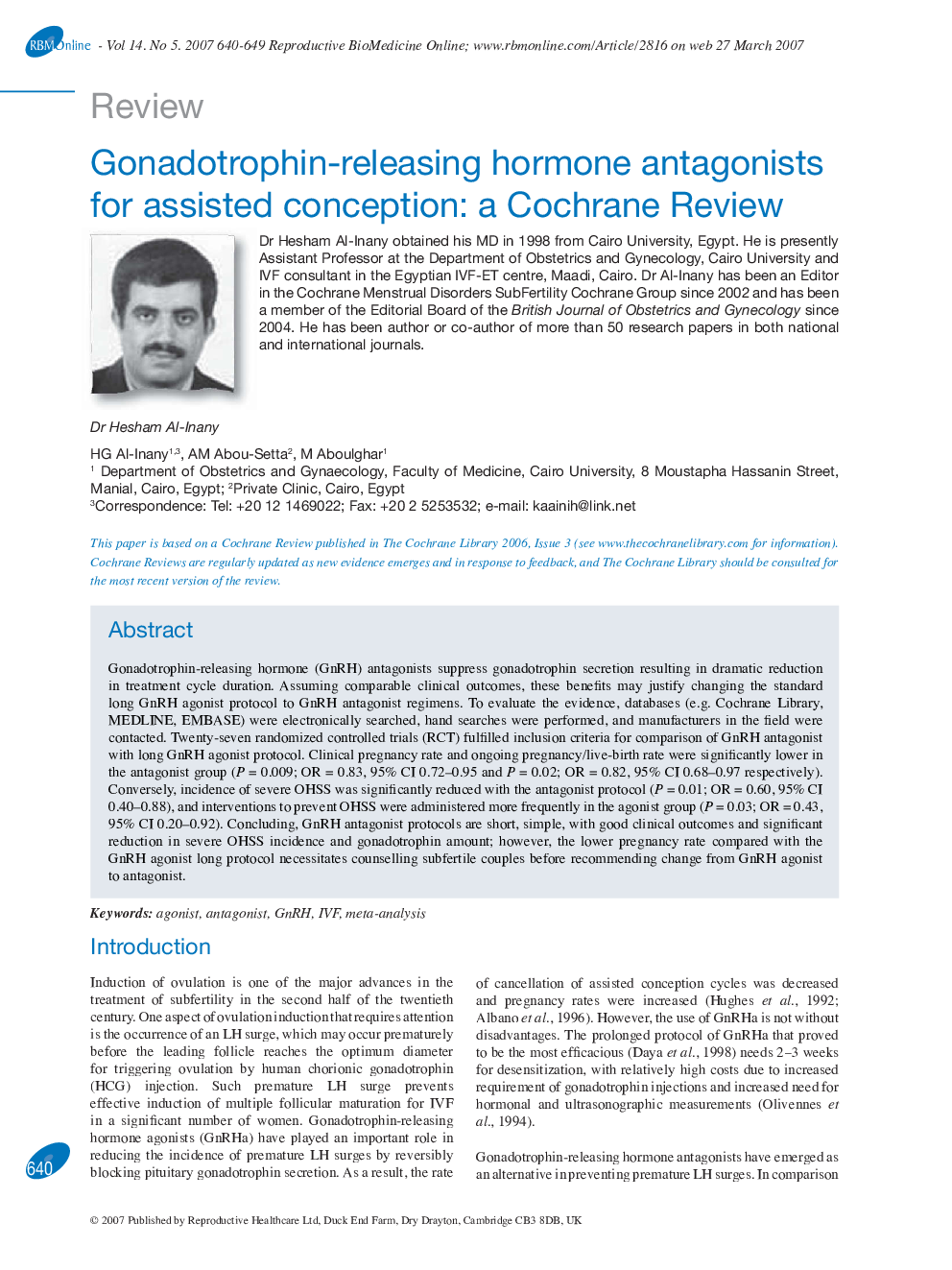| Article ID | Journal | Published Year | Pages | File Type |
|---|---|---|---|---|
| 3972985 | Reproductive BioMedicine Online | 2007 | 10 Pages |
Gonadotrophin-releasing hormone (GnRH) antagonists suppress gonadotrophin secretion resulting in dramatic reduction in treatment cycle duration. Assuming comparable clinical outcomes, these benefits may justify changing the standard long GnRH agonist protocol to GnRH antagonist regimens. To evaluate the evidence, databases (e.g. Cochrane Library, MEDLINE, EMBASE) were electronically searched, hand searches were performed, and manufacturers in the field were contacted. Twenty-seven randomized controlled trials (RCT) fulfilled inclusion criteria for comparison of GnRH antagonist with long GnRH agonist protocol. Clinical pregnancy rate and ongoing pregnancy/live-birth rate were significantly lower in the antagonist group (P = 0.009; OR = 0.83, 95% CI 0.72–0.95 and P = 0.02; OR = 0.82, 95% CI 0.68–0.97 respectively). Conversely, incidence of severe OHSS was significantly reduced with the antagonist protocol (P = 0.01; OR = 0.60, 95% CI 0.40–0.88), and interventions to prevent OHSS were administered more frequently in the agonist group (P = 0.03; OR = 0.43, 95% CI 0.20–0.92). Concluding, GnRH antagonist protocols are short, simple, with good clinical outcomes and significant reduction in severe OHSS incidence and gonadotrophin amount; however, the lower pregnancy rate compared with the GnRH agonist long protocol necessitates counselling subfertile couples before recommending change from GnRH agonist to antagonist.
